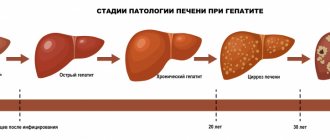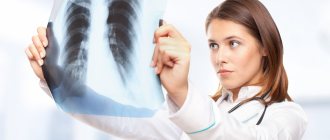Article for the “bio/mol/text” competition: Humanity has already spent billions of dollars searching for new ways to fight cancer and improving existing ones, but the problem still remains unsolved. The endless wars against cancer often end in our defeat. Is it possible to come up with a magic pill for cancer and proudly declare: “That’s it, now we’ve won”? Unfortunately, the answer to this question is very disappointing for us. Despite the fact that scientists around the world are coming up with new ways to combat cancer, cancer is also capable of learning: cancer therapy is constantly faced with the emergence of multidrug resistance.
What are the causes of cancer?
Speaking about cancerous tumors, it is necessary to clearly distinguish between the immediate cause of their appearance and risk factors.
The latter can become the impetus for the onset of the disease. According to the molecular genetic theory of malignant neoplasms, the occurrence and growth of a tumor is associated with damage to the genetic material of cells. It occurs under the influence of a variety of factors, which are collectively called carcinogenic agents. As a result, cells with DNA abnormalities acquire the ability to multiply uncontrollably, form a tumor and spread through metastases. Science assigns the main role among the causes of tumors to damage to the p53 gene. Normally, it limits the ability of cells to reproduce and prevents them from growing uncontrollably. In addition, some researchers report that the formation of a number of cancer pathologies with a hereditary predisposition may be associated with disturbances in the structure of the p15 and p16 genes. So, genetic mutations are the cause of cancer. But what causes our cells to mutate? All those influences that cause damage to the genetic material are classified as cancer risk factors. Scientists identify many such factors, but point out that in most cases a tumor occurs due to the combined influence of several of them. Traditionally, factors are usually divided into exogenous (arising from the external environment) and endogenous (arising inside the human body).
Important to remember
- Cancer patients often experience depression, anxiety, sleep disturbances, and irritability. In remission, they may experience post-traumatic stress disorder, substance abuse, and suicidal behavior.
- Most people react to a cancer diagnosis according to the Kübler-Ross model: they deny the disease, get angry, bargain, experience depression and eventually come to terms with their condition.
- Depression may reduce the likelihood of a positive outcome with treatment. At the same time, studies indicate that patients without depression have a higher chance of recovery
- Patients often become depressed and anxious due to misinformation about their illness and lack of psychological help. The task of a psychiatrist and medical psychologist is to balance the emotional background and correct the mental status with the help of medications, psychotherapy and psychological training.
Exogenous factors
They are divided into physical, chemical and biological.
Physical factors
- Solar
ultraviolet Ultraviolet radiation from the sun has long been recognized as one of the most significant factors for the appearance of tumors. UV rays, passing through DNA molecules, damage their genetic structure. This causes mutations in genes that are responsible for suppressing tumor cell growth. - Ionizing radiation
This risk factor is predominantly artificial, technogenic in origin. Radiation can lead to the development of many types of tumors, since it has a pronounced damaging effect on the gene structure of cells. Regular occupational exposure to radiation or a single strong exposure increases the risk of developing cancer by 2–3 times. - Electromagnetic fields
Medicine has long known that constant exposure to intense electromagnetic radiation negatively affects human health. This is usually associated with his professional activities. Thus, according to some studies, people working in the telecommunications sector suffer from cancer one and a half times more often. - Fluorescent lighting
The importance of fluorescent light sources in the development of malignant tumors has been questioned by many scientists. But a specially conducted study speaks in favor of this cause of cancer. It confirmed the high incidence of cancer pathologies in people who worked in rooms with sources of intense fluorescent light for a long time (20 years or longer). - Chronic tissue trauma
Trauma (especially constant) carries with it the likelihood of the appearance of cancer cells. A good example of this is melanoma—this form of skin cancer is more likely to occur in areas that are exposed to friction, such as from uncomfortable clothing.
Chemical factors
The impact of this group of factors is more often observed in people who, due to their occupation, are in constant contact with aggressive chemicals. Such “dangerous” professions include:
- petrochemical production;
- production of nitric acid;
- production of rubber products;
- pharmaceuticals;
- work in a coal mine;
- production of polyvinyl chloride and other plastics;
- production of benzene and pesticides.
In addition, according to the type of exposure, poor environmental conditions can also be attributed to the chemical causes of oncology.
Pollution from automobile exhausts, emissions from large industrial production, water, air and soil pollution with carcinogenic substances are the most important risk factors for cancer development. Biological factors
- Features of the diet It
has been experimentally confirmed that sufficient consumption of fresh fruits and vegetables containing many vitamins (in particular, A, E and C) reduces the risk of developing cancer. Conversely, there is evidence that a large amount of animal fats and proteins in the diet increases the incidence of tumors. - Bad habits
Drinking alcoholic beverages can be considered a special case of poor diet. It is known that ethanol can provoke the formation of at least 10 types of malignant neoplasms. First of all, these are cancerous tumors of the digestive system: esophagus, stomach, small and large intestines. Smoking cigarettes cannot be called a diet disorder, but this habit is traditionally mentioned together with drinking alcohol. The oncological danger of tar, soot and other products of tobacco combustion is a long-confirmed fact and is beyond doubt among doctors around the world. Lung cancer is one of the most common oncological diseases, and it is also among the leaders in the number of deaths. And more than 90% of cases of this pathology are associated with smoking. - Viral infections
An increased risk of developing malignant tumors is directly related to infection with certain types of viruses. Among them, special mention should be made of the rubella virus and human papillomavirus of various types. - Pharmacological drugs
Among drugs, the most likely to cause cancer are hormonal drugs containing estrogen. This group includes many popular contraceptives (oral contraceptives) and medications that are prescribed for menstrual irregularities and to alleviate menopausal disorders. It is important to note that these drugs become a risk factor only if they are used uncontrolled and if medical recommendations are not followed.
Why is the help of a psychologist important?
Often the problem of emotional disturbances, anxiety and depression in cancer patients is that patients are not always told the true state of affairs - due to the heavy workload, the doctor may simply not have time. The patient has to think of something, ask friends and look for information on the Internet. This is a bad example, since each patient has his own course of the disease, and he hears and reads generalized information.
An unstable emotional state, in addition, is reinforced by stereotypes and myths about the incurability of oncology, imminent death, suffering and hopelessness. In fact, in the conditions of modern medicine, active cooperation with doctors and psychologists, compliance with medical prescriptions and an active position in therapy, oncological diseases are treatable.
“The disease must be treated systemically,” says Kamilla Shamansurova. “Not only the body is sick, oncology is a threatening disease with high risks of mortality, uncertainty and stress, so psychological support must be mandatory.”
A psychiatrist and medical psychologist work with the patient to correct mental disorders. A psychiatrist is needed to reduce the severity of depression and anxiety with medication. He may prescribe antidepressants and anti-anxiety medications. If a psychiatrist knows psychotherapeutic techniques, he conducts psychotherapy sessions with the patient. As a rule, the method of cognitive behavioral therapy is used for this.
The task of a medical psychologist is to provide psychological support to the patient at all stages of diagnosis and treatment. A medical psychologist helps the cancer patient and his loved ones process negative emotions, look for ways to overcome stress, and offers corrective techniques, such as meditation, relaxation techniques and mindfulness, which reduce the severity of depression and anxiety. In turn, this increases the likelihood of recovery.
Every year medicine moves towards humanism and more and more medical psychologists appear in clinics, especially in oncology departments. If you have been diagnosed with cancer, seek psychological help from a mental health professional. In addition, psychological support groups are organized for patients and their relatives. For example, according to Dmitry Olkin, there is a hotline - the Clear Morning service, where they provide psychological assistance to patients with oncology.
It is very important not to be alone with your emotions and go through the treatment path with a psychologist. Remember that the sooner you see a doctor, the greater the chances of remission and the likelihood of recovery.
Biological characteristics of the body
- Age
All our cells go through many division cycles during their lives. And with each such cycle, breakdowns and errors accumulate in their genetic material. Many of them correct the internal protective mechanisms of the cell, but, nevertheless, their total volume steadily increases with age, which is the cause of cancer. This is why the risk increases as a person ages. - Race and Ethnicity
Caucasians are, on average, 4 times more likely to develop skin cancer than black people. For other types of cancer, the opposite trend is observed: for example, lung cancer and prostate cancer are more common in the Negroid race. But Asians have a generally lower risk of developing any tumors than other members of humanity. - Family predisposition
The increased incidence of cancer in members of the same family is a long-established medical fact. This is due to the fact that genetic disorders leading to the development of cancer can be inherited with a chance of about 5–10%. Most often, these pathologies are inherited in the closest degree of relationship, for example, from parent to child. In addition, a situation where there are 2 or more cases of cancer in the family history leads to a significant increase in the risk of inheritance. - Anthropometric indicators
These include characteristics of the human body such as height, weight and body mass index. A special study showed that the risk of tumors in people with excess body weight is higher. - Pathologies of the immune system
Science has long known that any immunological pathologies increase the likelihood of malignant neoplasms. For example, people with HIV infection and those taking immunosuppressive drugs, say, after organ transplantation, have been shown to have a higher risk of developing Kaposi's sarcoma. This is due, first of all, to the fact that with a general suppression of immune functions, its antitumor activity also suffers. After all, normally the immune system should recognize and destroy even single malignantly degenerated cells. - Endocrine factors
The influence of hormones on the risk of certain tumors has long been proven in a number of specialized studies. The main role in this case is given to sex hormones. Thus, malignant neoplasms of the female reproductive system, as well as the mammary glands, can be estrogen-dependent. Androgen-dependent tumors in men are, first of all, prostate cancer. - Pregnancy
Pregnancy is always associated with global endocrine changes in the woman’s body. These changes have a high risk of activating oncogenesis processes. Therefore, when planning and diagnosing pregnancy, it is useful for all women to visit a consultation with an oncologist.
Cancer Rally
Cancer is the collective name for a group of fatal and extremely heterogeneous diseases [1]. However, all cancer cells have a set of characteristic biological characteristics [2], allowing us to apply general strategies for anticancer therapy.
One of these signs is chronic proliferation (uncontrolled division) of cells. Normal cells require growth factors produced by their comrades [3], while cancer cells can provide themselves with the “growth” signal on their own. Let's imagine that a tumor in the body is a car speeding along the highway. In this case, the car's gas pedal is constantly working (Fig. 1).
Figure 1. Cancermobile. Compared to healthy cells in the body, cancer cells are like a racing car: powerful, fast and unsafe.
illustration by Evgenia Inozemtseva
On the other hand, inhibitory signals are included in the regulation of cell growth. Cancer cells have learned to ignore such signals. That is, our “cancer car” also turns out to have broken brakes.
Agree, such a car on the road is simply dangerous for others. Typically, a driver can tell if they are speeding by looking at the speedometer. In a cell, the role of a speedometer is performed by the p53 protein, a key sensor of DNA damage that triggers the death of a cancer cell by apoptosis (one of the types of programmed cell death). However, many types of cancer involve loss of p53 function, which prevents self-destruction mechanisms from being triggered.
The mileage of the “cancer machine” is determined by telomeres (the ends of chromosomes), which shorten with each cell division. About 90% of cancers contain a protein that can increase telomere length [4], [5]. Thus, the “cancer car” always seems to be a brand new model, although in fact this old nag simply had its odometer readings twisted.
A car rushing along the highway consumes liters of fuel. Likewise, cancer cells need nutrients and oxygen, so tumors stimulate the sprouting of blood vessels around them - angiogenesis, which facilitates the delivery of “fuel” to the tumors [6].
Many tumors are invasive and have the ability to metastasize [7–9]. And although the first process occurs in the tissues where the tumor appeared, and the second involves the construction of colonies in other tissues, genetically and biochemically both processes are very similar. Let's say that our car suddenly turns into a flying one.
Cells of the immune system, like inspectors on the road, fight crazy cancer cells - traffic violations - and restore normal body functions. However, the immune system is not so simple. Like corrupt police officers who are part of a crime syndicate, the immune system sometimes promotes tumor growth [10].
Diagnosis of cancer in Onko
Preventive examinations play the most important role, the full range of which you can undergo at the Oncological Department.
They solve the main problem of oncology - late detection of tumors. At the initial stages of cancer development, the success rate of treatment is more than 80%, regardless of the type. Cancer screening may include:
- clinical and biochemical blood tests;
- clinical urine analysis;
- determination of tumor marker concentrations;
- X-ray examinations;
- Ultrasound of internal organs, peripheral lymph nodes, skin nodules, mammary glands, thyroid gland; magnetic resonance imaging, computed tomography and positron emission tomography, combined with computed tomography according to indications.
At-risk groups
The likelihood of developing lung cancer depends on a combination of many different factors. The following categories of people are at risk:
- having cases of cancer among their immediate relatives (this is especially true for prostate cancer in men and breast cancer in women);
- working in hazardous industries associated with radiation/dust/inhalation of chemicals;
- having excess weight or a predisposition to it;
- having mental disorders;
- living in megacities near large industrial enterprises;
- eating improperly;
- regularly consuming alcoholic beverages and tobacco;
- mature and elderly people (over 50-60 years old);
- those who have experienced severe and prolonged stress.
Why do people get cancer: a history of illness and recovery
Each of us has our own destiny and our own, seemingly unrealistic, dreams. Sometimes we spend our entire lives suppressing our desire for happiness. By changing our lives, we get better. The case of Le Shan's patient, whose name was Robert, is an excellent illustration of this.
He was a good specialist, did not complain about his health, but at the age of 65 he decided to retire. Robert was sure that he would devote his free time to his grandchildren. But his son separated from his wife, and his grandchildren were taken to another city. Life for Robert has lost its meaning. His health deteriorated sharply, and soon he received a disappointing diagnosis - cancer. It is unknown how Robert's life would have turned out, but he met with Dr. Le Shan.
From the very first conversations, Robert realized that his cancer had a psychological cause - he had lost the main incentive in life. Psychotherapy sessions revealed another almost forgotten interest in politics. Le Shan advised Robert to join an organization dealing with social issues. Communication with new people, new responsibilities returned to him his former activity, and with it fresh strength. To keep fit, Robert had to go in for sports. The tumor stopped growing and then disappeared.
How to escape
Some time ago, researchers from the American Cancer Society (ACS) concluded that half of cancer cases are caused by an unhealthy lifestyle. In general, external environmental factors are responsible for the lion's share of oncological diseases; only genetic factors and simply random mutations in DNA, which we cannot influence in any way, remain uncontrollable.
Many of the impacts can be eliminated, others can be reduced to a minimum. These measures typically include maintaining a healthy weight, exercising, quitting smoking and drinking alcohol, and avoiding prolonged exposure to sunlight and contact with various chemical pollutants. However, now you can add vaccinations (especially against HIV and hepatitis) and other types of prevention of infectious and parasitic diseases.
Photo: Alena Kochetkova
What is precancer
In addition to the first symptoms of cancer, there are so-called background and precancerous diseases. Background diseases are pathological processes as a result of which tissues or organs may be predisposed to the appearance of a tumor. Precancerous diseases are a series of changes that can eventually develop into cancer. For each organ, a list of such conditions has been developed. Here are some of them:
- Oral mucosa : leukoplakia, ulcers, cracks, erosions, papillomas.
- Larynx and nasopharynx : papillomas, pachydermia, leukokeratosis, leukoplakia, various growths of fibrous, connective, glandular tissue (fibroma, adenoma, chondroma).
- Thyroid gland : diffuse goiter, nodular goiter.
- Skin : long-term non-healing fistulas, scars, ulcers, age spots and warts (especially injured ones), pigmentary xerodelia, chronic cracks and macerations, skin development abnormalities, senile keratosis.
- Mammary glands : diffuse or focal mastopathy.
- Stomach : gastritis, especially chronic atrophic, chronic ulcerative process.
- Colon and rectum : chronic ulcerative colitis, long-term non-healing fissures, fistulas, single polyps, scars.
- Bladder, prostate gland : papillomas, chronic inflammatory process, glandular growths (adenomas).
- Female reproductive system : leuko- and erythroplakia, polyps, hyperplasia, adenomatosis, condillomas, benign tumors, cicatricial deformities of the vaginal walls, erosions, true and false, ectropion of the cervix, recurrent polyposis of the uterine cavity, fibroids and fibroids.









